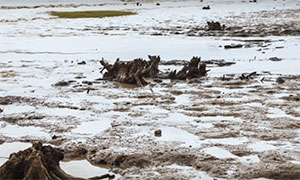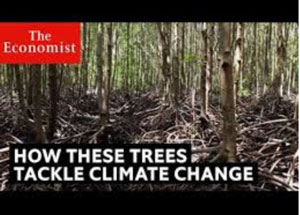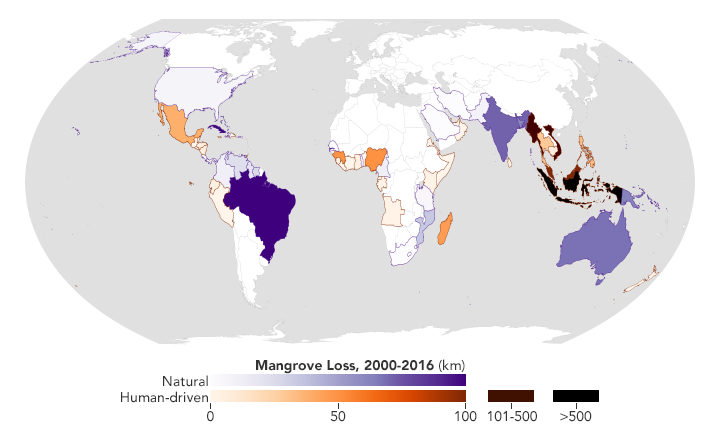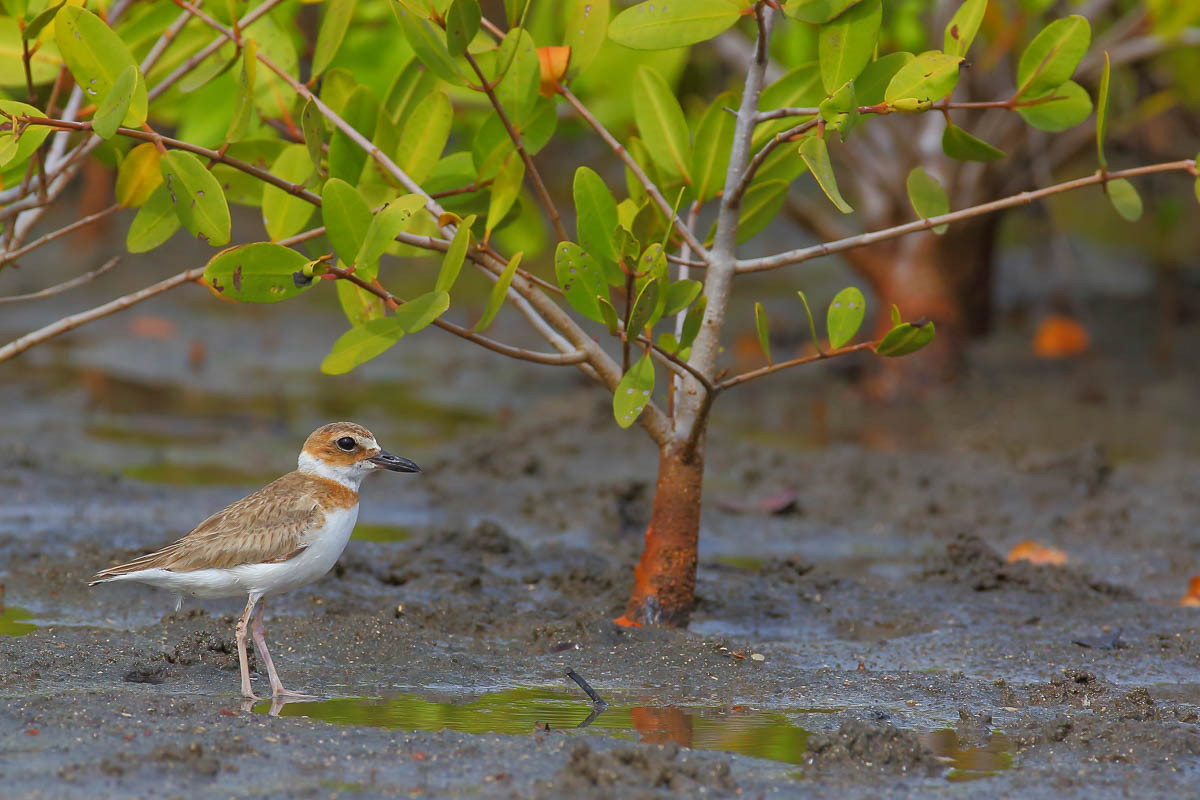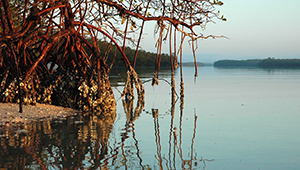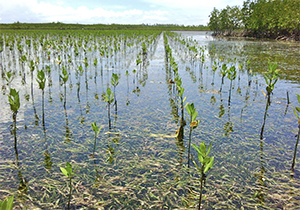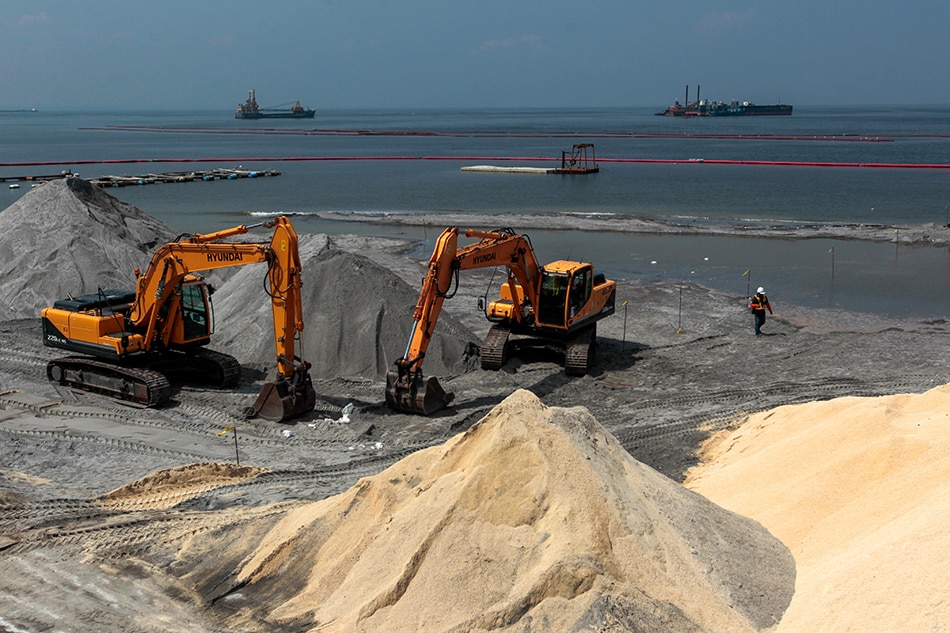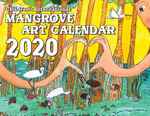|
The MAP News
504th Edition SEPT 26, 2020 |
|
|
Incredible wildlife photograph wins Mangrove Photography Award  GLOBAL - The Mangrove Action Project has announced the winners of the 2020 Mangrove Photography Award, with the grand prize going to Victor Hugo Luja Molina, who captured an incredible wildlife photograph of a female jaguar with her cub. However, Victor wasn't the only wildlife photographer to feature in this year's awards, with images of crocodiles and flamingos also making a welcome appearance. The Mangrove Photography Awards were created to give an insight into the world of mangroves from all over the world. This year's entries help to capture the relationships between wildlife, coastal communities and mangrove forests. They also help show the fragility of these unique ecosystems from both above and below the water. Victor Hugo Luja Molina's winning shot was taken in a mangrove forest in Mexico. Jaguars are rarely seen in mangroves, which is part of what makes Victor's shot so special.. READ MORE GLOBAL MAP’s Annual Children’s Mangrove Art Competition 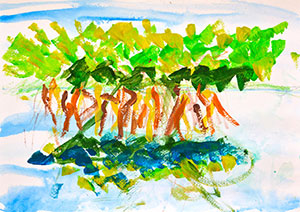 GLOBAL - This year MAP’s Children’s Mangrove Art Calendar Competition was interrupted by the COVID pandemic. This forced us to change the guidelines for the contest that we have produced over the past 19 years. Around the world, schools were closed, the youths isolated in their homes without much to do and teachers teaching remotely where possible In the face of these new and challenging constraints, we decided to conduct this contest in a different way, via expanded outreach to NGOs and schools, and by posting announcements in art-related online publications. A big change was our opening this year’s contest to all children globally, not only to children who lived in countries with mangroves. READ MORE Biodiversity is fundamental to human life on Earth 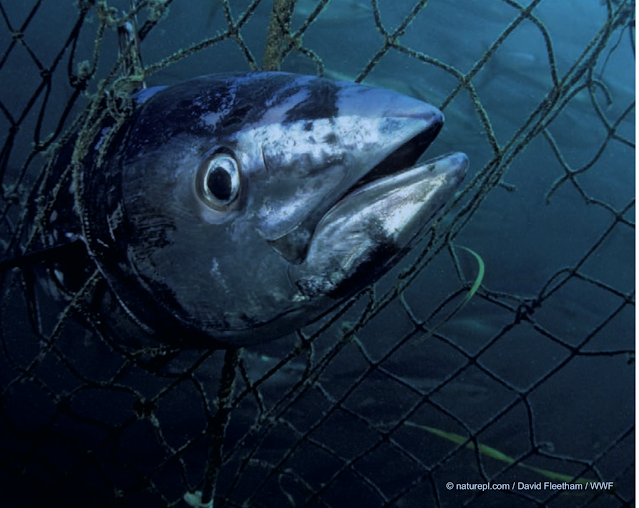 GLOBAL - The global Living Planet Index continues to decline. It shows an average 68% decrease in population sizes of mammals, birds, amphibians, reptiles and fish between 1970 and 2016. A 94% decline in the LPI for the tropical subregions of the Americas is the largest fall observed in any part of the world. Why does this matter? It matters because biodiversity is fundamental to human life on Earth, and the evidence is unequivocal – it is being destroyed by us at a rate unprecedented in history. Since the industrial revolution, human activities have increasingly destroyed and degraded forests, grasslands, wetlands and other important ecosystems, threatening human well-being. Seventy-five per cent of the Earth’s ice-free land surface has already been significantly altered, most of the oceans are polluted, and more than 85% of the area of wetlands has been lost. READ MORE Biodiversity needs the voices of indigenous peoples 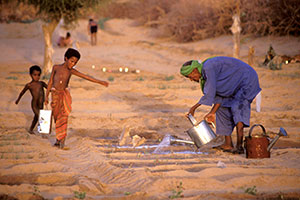 GLOBAL - Ongoing disregard of the vital contributions of indigenous peoples and local communities (IPLCs) to biodiversity conservation and sustainable use—in- cluding in national biodiversity strategies and action plans—constitutes a major missed opportunity for the United Nations Decade on Biodiversity 2011–2020. This neglect has affected the under-achievement of all 20 Aichi Biodiversity Targets, with fundamental lessons remaining to be learnt about securing the future of nature and cultures. Putting the cultures and rights of IPLCs at the heart of the 2050 biodiversity strategy would deliver sustainable livelihoods and wellbeing, and positive out- comes for biodiversity and climate. Overcoming dualism, separation and imbalances in relationships between humans and nature is central to addressing the biodiversity and health crises, including the rise of zoonotic diseases and pandemics. Sustained interactions and partner- ships between sciences and indigenous and local knowledge systems—inclusive of women, men, elders and youth—are enriching contemporary problem-solving with holism and reciprocity. READ MORE AFRICA More Mysterious Dark Substances Seen In Ocean Around Mauritius After Oil Spill  MAURITIUS - The giant puzzle surrounding the Mauritius oil spill keeps getting bigger almost two months on, as more pieces are added, and fewer questions are answered. On Sunday 20 September, local kitesurf instructor, Denis Labeauté filmed a mysterious dark substance in the waters moving around the South of the island. Based on the direction of the currents at this time of year, the substance was coming from the direction of the giant Japanese ship, the Wakashio, and the subsequent oil spill. It could also have been coming from the direction of the sunken front part of the vessel, the part of the vessel still stuck on the reef, or the cleanup operation, that continues under strict secrecy. Given that the Wakashio was sunk in an undisclosed location and a full inventory has still not yet been disclosed of what was on the vessel, it is unclear whether the dark substance could have originated from the vessel. READ MORE AMERICAS Cayman Islands Mangrove Rangers Begin Operations  CAYMAN ISLANDS - The Cayman Islands Mangrove Rangers have begun field observations following a month of intensive training from experts in the scientific, policy and legal fields. Launched on World Mangrove Day by a group of mangrove organizations - including the Mangrove Action Project and Mangrove Education - the Rangers will provide data to the Department of Environment and National Conservation Council by collecting information on mangroves throughout the islands as well as monitoring existing and proposed developments which currently have little environmental oversight. READ MORE Our Paradise and Sovereignty under Siege 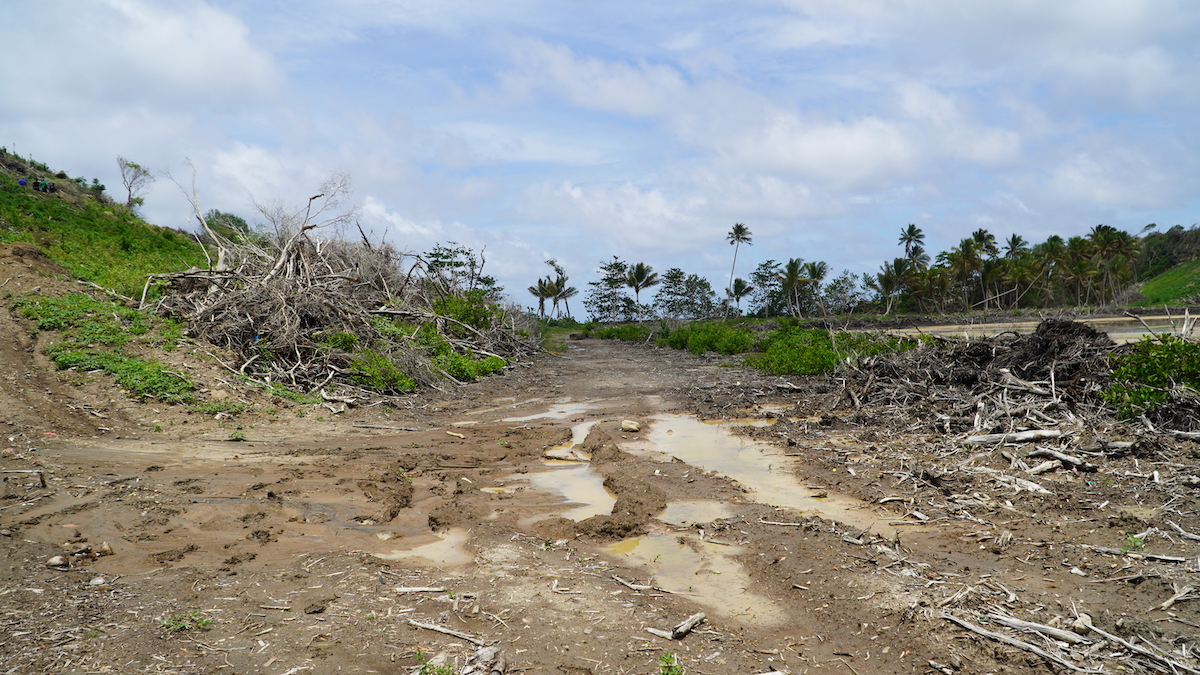 GRENADA - We, the concerned people of Grenada, demand better governance for land use and project development. We call upon the government and the Planning and Development Authority to act in the interest of our communities and protect our shared natural and cultural heritage in La Sagesse, Mount Hartman & Levera. Moving forward, we demand more inclusive sustainable development planning through the establishment of a National Physical Development Plan - this is long overdue. We appreciate the necessity of development in Grenada, and we do not intend in any way to hamper the economic potential of the country or jeopardize the creation of much-needed jobs, particularly in the rural parishes. However, this should not happen to the detriment of the country’s invaluable and finite cultural and environmental assets. SIGN OUR PETITION The Florida Activist Is 78. The Legal Judgment Against Her Is $4 Million  USA - Maggy Hurchalla’s piece of Florida heaven is a patch of pristine Atlantic shore accessible only by boat in St. Lucie Inlet Preserve State Park. She and her husband nicknamed it the “End of the World” when they first came upon it half a century ago, after paddling south along the barrier island to the water’s end. She still likes to skinny-dip at the beach. Ms. Hurchalla, 78, could spend her remaining years kayaking here, readily outpacing paddlers less than half her age. Or traveling the country, giving speeches about the legacy of her sister, Janet Reno, the first female attorney general of the United States. But instead of reveling in her retirement, Ms. Hurchalla, who has devoted her life to protecting the untamed Florida wilderness that she loved, has been fighting a public battle with a rock-mining company — and losing. A jury decided last year that Ms. Hurchalla should pay $4.4 million in damages to Lake Point Restoration, a company that has a limestone mining operation in Martin County, along Florida’s Treasure Coast. READ MORE ASIA China to have 18,800 hectares of mangrove forests by 2025 CHINA - China will have created and restored 18,800 hectares of mangrove forests by 2025, said an action plan recently issued by China’s Ministry of Natural Resources and National Forestry and Grassland Administration (NFGA).Of the total, 9,050 hectares of mangrove forests will be built over the next five years, and 9,750 hectares will be rehabilitated. The action plan, aiming at the protection and restoration of mangrove forests during the 2020-2025 period, will ensure strict protection for existing mangrove forests and scientific measures for mangrove ecological restoration, so as to expand the coverage of mangrove forests, increase biodiversity, and comprehensively improve the ecological system of mangrove forests. READ MORE The Criminalization of Fisherfolks, Environmental Activist and Student Journalist in Makassar  INDONESIA - KIARA with Save Indonesian Seas Coalition, Alliance to Save South Sulawesi Coastal Area (ASP Sulawesi Selatan) and other civil society organizations in South Sulawesi have condemned the arbitrary arrestation of 7 (seven) fisherfolks, 1 (one) environment activist, and 3 (three) students – who work as press journalist in Makassar, by Polairud (Air and Water Police Force) of South Sulawesi. The arbitrary arrest was conducted to detain several fisherfolks, namely Nawir, Asrul, Andi Saputra, Irwan, Mustakim, Nasar, and Rijal. One of the fisherfolks even experienced physical violence to the point that his face was bleeding. In addition, the environment activist – Rahmat – who was recording the incident, was also being arrested and experienced some physical violence. He was hit in the face, being kicked, stomped in the neck. Even Rahmat’s handphone which being used to record, fell into the sea when the Polairud tried to confiscate it. Meanwhile, the other three students whom also being student press journalists, were actually doing news covering on the mass action. READ MORE Vaikaradhoo Mangrove Forest Under Threat  MALDIVES - Recent photos circulating in social media confirms the deteriorating condition of H.Dh Vaikaradhoo’s mangrove forest, adding it to the list of mangroves under threat in the northern most region of Maldives. H.Dh Vaikaradhoo’s Council President, Ahmed Naseem, in his interview to ‘Thiladhun’ stated that, the council is making an effort to bring this issue to the government’s immediate attention. He noted that there has been no identification of the cause behind the sudden die-off of mangroves in the island. Vaikaradhoo’s mangrove forest is a protected area, housing many endemic species. The before and after pictures of the mangroves highlight the graveness of the situation. These pictures have been taken by a group of environmentally conscious youth, hoping to make a change. READ MORE Trying to revive and protect Indonesia’s mangroves  INDONESIA - Indonesia’s extensive mangroves could be one of the cheapest ways of reducing carbon emissions, according to scientists. Indonesia’s coastlines are home to more mangrove forests than anywhere else.They protect the land from erosion and absorb carbon emissions, protecting people’s livelihoods and their health. Over the past few years, a lot of mangroves have been cut down for tourism or industrial developments but now, individual groups and the government are promising to do more to protect them. WATCH THE VIDEO LAST WORD
|
ACTION ALERTSOur Paradise and Sovereignty under Siege - Protect Grenada from Destructive Development! SIGN THE PETITIONStop the destruction of Can Gio Mangrove Biosphere Reserve
|
|
Mangrove Action Project Click here to view past newsletters
|
|
Search News Archive
Saturday, September 26, 2020
MAP News Issue 504 - Sept 26, 2020
Thursday, September 24, 2020
Cayman Islands Mangrove Rangers Begin Operations
The Cayman Islands Mangrove Rangers have begun field observations following a month of intensive training from experts in the scientific, policy and legal fields.
One of the key components of the project is the implementation of the Epicollect 5 real-time data collection system where the rangers can monitor the current status of developments – both legal and illegal – and their impact on mangroves.
MAP’s Annual Children’s Mangrove Art Competition
This year MAP’s Children’s Mangrove Art Calendar Competition was interrupted by the COVID pandemic. This forced us to change the guidelines for the contest that we have produced over the past 19 years. Around the world, schools were closed, the youths isolated in their homes without much to do and teachers teaching remotely where possible In the face of these new and challenging constraints, we decided to conduct this contest in a different way, via expanded outreach to NGOs and schools, and by posting announcements in art-related online publications. A big change was our opening this year’s contest to all children globally, not only to children who lived in countries with mangroves.
This year we received digital art from 34 countries. As before, we received art from organizations that work for the protection of mangroves, such as Save Maldives, CiNVESTAV-Mexico, BEDS-Bangladesh, CMCN-China, and others. But we also received digital art from many kids who found out about the contest through the Internet via Google and online children’s art magazines where they saw our posted announcements.
This year’s contest mobilized organizations, communities, teachers, students and families around the world. Many who participated in the art competition became aware about the importance of mangrove ecosystems for the first time by viewing MAP’s educational videos on YouTube and information posted on MAP’s website. Globally, kids are surfing the Internet looking for creative things to do. This art contest about mangroves offered a creative outlet for children during these difficult times.
The Criminalization of Fisherfolks, Environmental Activist and Student Journalist in Makassar
People’s Coalition for Fisheries Justice (KIARA)
Save Indonesian Seas Coalition
Alliance to Save South Sulawesi Coastal Area (ASP Sulawesi Selatan) Indonesian Fisherwomen Sisterhood (PPNI)
KIARA Criticize the Arrestation of Fisherfolks, Environment Activist, and Students in Makassar
Jakarta, 12 September 2020 – KIARA with Save Indonesian Seas Coalition, Alliance to Save South Sulawesi Coastal Area (ASP Sulawesi Selatan) and other civil society organizations in South Sulawesi have condemned the arbitrary arrestation of 7 (seven) fisherfolks, 1 (one) environment activist, and 3 (three) students – who work as press journalist in Makassar, by Polairud (Air and Water Police Force) of South Sulawesi.
The arbitrary arrestation was conducted to detain several fisherfolks, namely Nawir, Asrul, Andi Saputra, Irwan, Mustakim, Nasar, and Rijal. One of the fisherfolks even experienced physical violence to the point that his face was bleeding. In addition, the environment activist – Rahmat – who was recording the incident, was also being arrested and experienced some physical violence. He was hit in the face, being kicked, stomped in the neck. Even Rahmat’s handphone which being used to record, fell into the sea when the Polairud tried to confiscate it.
Meanwhile, the other three students whom also being student press journalists, were actually doing news covering on the mass action. The three students are Hendra from Unit Kegiatan Pers Mahasiswa Universitas Hasanuddin (UKPM-UH), Mansur and Raihan from Unit Kegiatan Penerbitan dan Penulisan Mahasiswa Universitas Muslim Indonesia (UPPM-UMI). Before being forcibly arrested, the three students had showed their student pers id card. However, the Polairud ignored it and were still arresting the students.
The arrestation incident happened after the mass demonstration which conducted by the community, environment activists, and students who against the sand mining project of Boskalis’s ship in Spermonde seas, particularly in the area near Kondingareng Lompo Island.
Nevertheless, the mass demonstration was actually the respond for the accumulation of sand mining activities in the purpose of Makassar New Port (MNP) project development which covering around 1428 ha through reclamation. Naturally, it gives various negative impacts to the fisherfolks and make the fisherfolks in Kodingareng Island fisghting back the development project endlessly.
Centre data and information of KIARA (2020) noted that if the sand mining activity has been operated since 13 February until August 2020, then the mining activity has been operating for 7 months already. During these 7 months – which calculated around 200 days – the ship which owned by PT Boskalis, has mined around
21.300.000 m3 of sea sands from Spermonder seas, particularly the area near Kondingareng Lompo island. The calculation of 21.300.000 m3 comes from the transport capacity from PT Boskalis’ ship which have around 35.500 m3 capacity with three-times shipment per day.
“The volume of the sea sand which around 12.300.000 m3, is not a small figure. It could destroy the marine ecosystem which becomes the home of fish and other sea biodiversity. It will also affect in the serious long-term destruction impact,” said Ahmad Fakar, the Coordinator of Alliance to Save South Sulawesi Coastal Area.
RZWP3K has to be evaluated and canceled
Based on the perspective of Susan Herawati – Secretary General of KIARA – the incident happened in Kodingareng island was actually the impacts from marine spatial policy as stated in the South Sulawesi Provincial Regulation No. 2/2019 on Coastal and Small Islands Zonation Plan (RZWP3K) of South Sulawesi 2019-2039. “In accommodating the strategize national project, South Sulawesi’s RZWP3K has allocating some reclamation area for MNP project and sand mining,” she said.
In addition, RZWP3K is actually a form of deprivation of livelihood and living space for fisherfolks, fisherwomen, and other community who lived in coastal area and small islands. In RZWP3K, various reclamation projects, sand mining, PLTU (Electric Steam Power Plant), and other big-scale development projects. “Nevertheless, at the same time, RZWP3K is not placing the rights of fisherfolks as the main priority on marine spatial planning,” she added.
Centre Data and Information of KIARA (2019) noted that there are several problems which can be find in RZWP3K, which are: first, it doesn’t prioritize coastal community as the main actor in managing marine and coastal resources; second, the allocation for coastal community’s livelihood is particularly smaller than the allocation space for port, industry, reclamation, mining, tourism, conservation, and any other projects; third, the preparation of the marine spatial regulations only provides legal certainty for private’s benefit and interest; fourth, with lots of articles/clause which accommodating reclamation projects, marine spatial regulations is also not considering the sustainability of marine ecosystem; fifth, mixing up the traditional fishing area for traditional fisherfolks with others public uses areas, as it will impacts on the high-risk of fisherfolks being hit by larger ships.
“Because it only prioritizes the project, RZWP3K often triggers the conflict in various places in Indonesia. The incident happened in Makassar is actually a clear evidence that Provincial Regulation on RZWP3K is actually the reason of maritime space conflict” said Susan.
Other important thing that lacked to be recognized in RZWP3K in South Sulawesi is the Disaster problem. Based on the document published in 2017 about Earthquake Map in Indonesia by the National Center for Earthquake Studies, Research Institute for Housing and Human Settlements- Ministry of Public Works and Housing Indonesia, together with other institutions and universities in Indonesia like LIPI,
AIPI, BMKG, BNPB UGM, UI, and ITB, it stated that in the Makassar Strait there is earthquake fault. "In other words, the RZWP3K in South Sulawesi has established without considering the natural disasters that exist in the Makassar Strait. Ironically, the area for sea sand mining has been allocated 9,355.49 hectares, "added Susan.
Therefore, KIARA urges the government of Indonesia to evaluate all the Regional Regulations of RZWP3K that have been established, especially the RZWP3K in South Sulawesi. Because the policy has been proven to confiscate the rights of fishermen, fisherwomen, and coastal and small island communities in Indonesia and unaware of the risk of natural disasters.
"Reflecting on the case of sand mining in the Spermonde area that give effect to the fishermen on Kodingareng Island, it proves that the RZWP3K in South Sulawesi consists of many problems. We urge the RZWP3K in Indonesia to be evaluated and revoked, "Susan concluded.
Further Information:
Susan Herawarti, General Secretary of KIARA/Members of Save Indonesian Seas Coalition, +62 821-1172-7050
Ahmad Fakar, Coordinator of Alliance to Save South Sulawesi Coastal Area (ASP Sulawesi Selatan), +62 852-4041-2019
Masnuah, General Secretary of Indonesian Fisherwomen Sisterhood (PPNI), +62 852-2598-5110Biodiversity is fundamental to human life on Earth
From World Wildlife Fund 2020 report
Photo: Naturpl.com/David Fleetham/WWF
The global Living Planet Index continues to decline. It shows an average 68% decrease in population sizes of mammals, birds, amphibians, reptiles and fish between 1970 and 2016. A 94% decline in the LPI for the tropical subregions of the Americas is the largest fall observed in any part of the world.
Saturday, September 12, 2020
MAP News Issue 503
|
The MAP News
503rd Edition SEPT 12, 2020 |
|
|
FEATURE
What Two Major Oil Spills In Venezuela And Mauritius Now Mean For The World Cayman islands Mangrove Rangers – Workshop #2
|
Our Paradise and Sovereignty under Siege - Protect Grenada from Destructive Development! SIGN THE PETITION
|
|
Mangrove Action Project Click here to view past newsletters
|
|
-
The community of adults and youth in Cayman Islands has come together recently to release a series of educational videos. Each is geared to...
-
By Alfredo Quarto, Program & Policy Director Co-founder, MAP There is a rather urgent situation concerning the bio-invasion of the Son...
-
By: Isabel Robinson, MAP Volunteer Intern Some months ago I decided to come to Thailand and do an internship in mangrove conservation, ...
MAP News Issue #596 = April 20, 2024
ENTRIES NOW OPEN! Mangrove Photography Awards 2024 10 Years Celebrating Mangroves GLOBAL - MAP has launched our 10th Mangrove Photograp...




